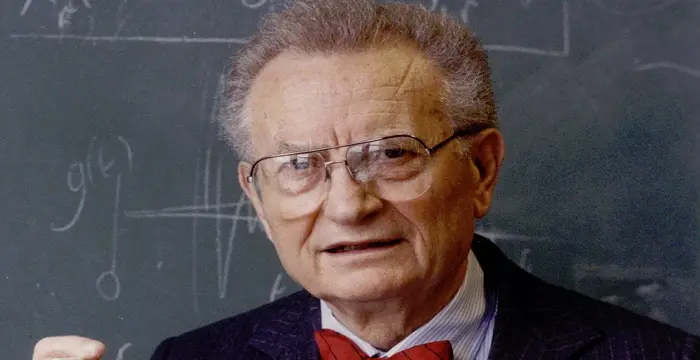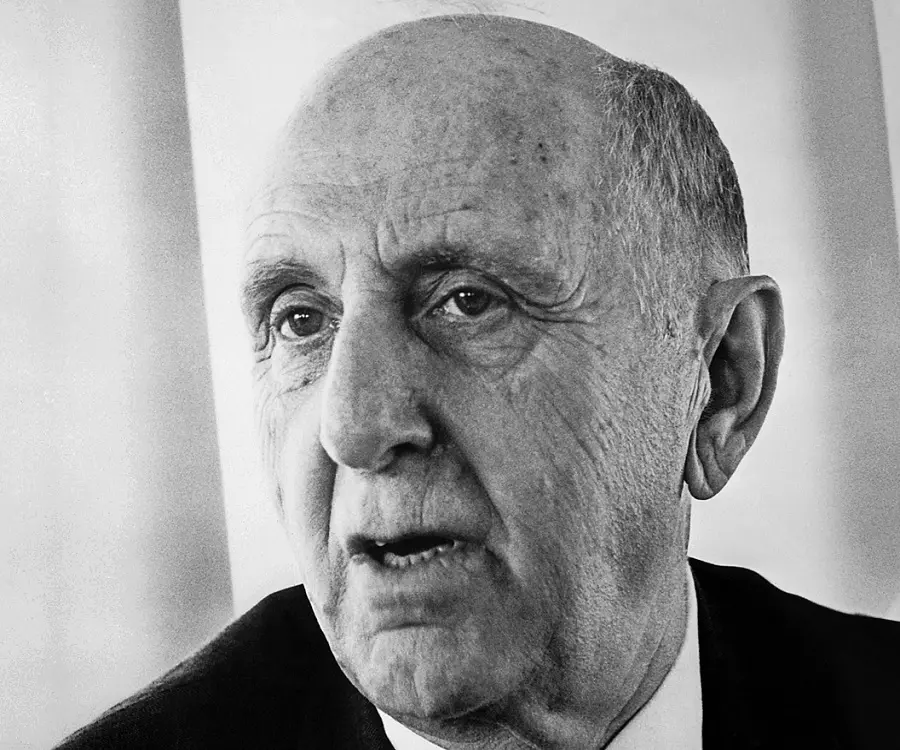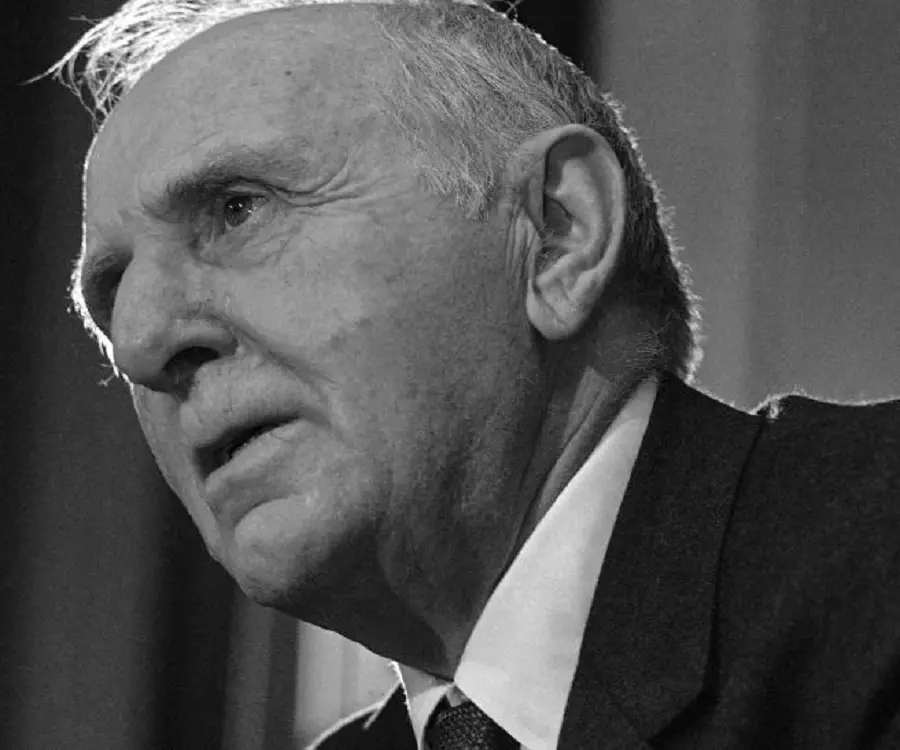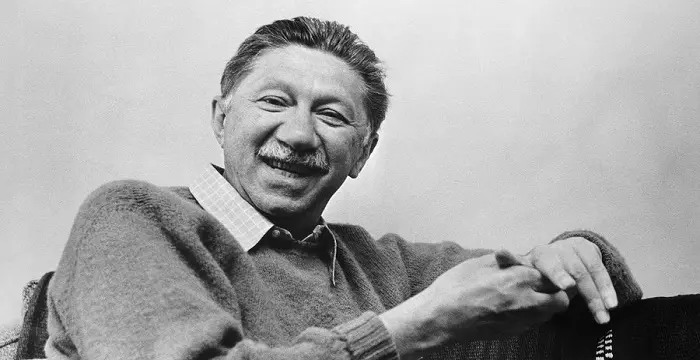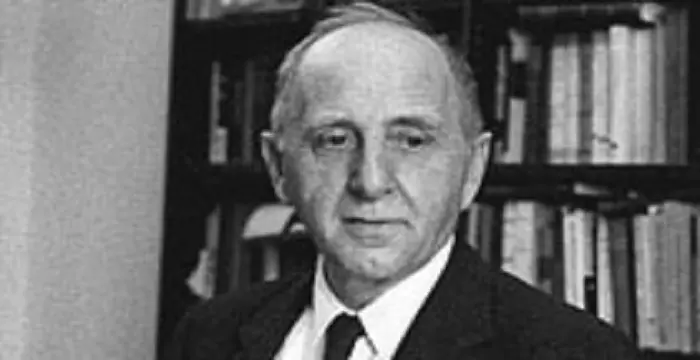
Simon Kuznets - Intellectuals & Academics, Timeline and Facts
Simon Kuznets's Personal Details
Simon Kuznets was a noted Russian-American economist, statistician, demographer, and economic historian
| Information | Detail |
|---|---|
| Birthday | April 30, 1901 |
| Died on | July 8, 1985 |
| Nationality | American |
| Famous | Columbia University, Intellectuals & Academics, Economists |
| City/State | Massachusetts |
| Spouses | Edith Handler |
| Childrens | Judith Stein, Paul Kuznets |
| Universities |
|
| Notable Alumnis |
|
| Discoveries / Inventions |
|
| Birth Place | Pinsk |
| Religion | Jewish |
| Gender | Male |
| Sun Sign | Taurus |
| Born in | Pinsk |
| Famous as | Economist |
| Died at Age | 84 |
// Famous Economists
Bertil Gotthard Ohlin
Bertil Gotthard Ohlin was a famous Swedish economist. This biography profiles his childhood, family life & achievements.
Emily Greene Balch
Emily Greene Balch was an American economist, sociologist and pacifist who won the 1946 Nobel Peace Prize. This biography of Emily Greene Balch provides detailed information about her childhood, life, achievements, works & timeline.
Paul Samuelson
Nobel laureate Paul Anthony Samuelson is referred to as the ‘Father of Modern Economics’. This biography profiles his childhood, life, career, achievements and interesting facts about him.
Simon Kuznets's photo
Who is Simon Kuznets?
Simon Kuznets was a noted Russian-American economist, statistician, demographer, and economic historian, born into a well-to-do Jewish family in Belarus at the turn of the twentieth century. Although he started his college education at Kharkiv, he had to leave the country before he could earn his degrees. Subsequently, he immigrated to the USA, where he completed his education at the Columbia University, earning his degrees in quick succession. Thereafter, he began his career as a member of research staff at the National Bureau of Economic Research, shortly becoming the head of the Bureau’s work on national income accounts. Although many believe he earned his Nobel Prize for this work it was his empirical work on an economic growth that began in northwestern Europe in late eighteenth century and later moved eastward to Russia and Japan that earned him the coveted prize. Another of his important contribution was what we now know as ‘Kuznets Cycle’. It refers to the cyclical nature of production and prices, spanning a period of 15/20 years. Apart from a meticulous researcher, he was also a well-known academic. Beginning his teaching career at University of Pennsylvania, he later moved to Hopkins University and finally to Harvard.
// Famous Columbia University
Helen Morris
Helen Morris is a former book editor, TV producer and the wife of Academy Award winning director Martin Scorsese. Check out this biography to know about her birthday, childhood, family life, achievements and fun facts about her.
Anna Paquin
Anna Paquin is a Kiwi film, theatre and television actress known for her roles in movies like ‘The Piano’, ‘Fly Away Home’, and ‘X-Men. This biography provides detailed information about her childhood, life, achievements, works & timeline.
Abraham Maslow
Abraham Maslow was a humanistic psychologist best known for his theory of self-actualization. This biography of Abraham Maslow provides detailed information about his childhood, life, achievements, works & timeline.
Childhood & Early Years
Simon Kuznets was born on April 30, 1901 in the city of Pinsk, then under the Russian Empire. Not much is known about Simon’s parents except that his father was a banker and that they had three sons, out of which Simon was born second.
Simon began his primary education in Pinsk. Later at the age of nine or ten, he moved with his family to Rovno in Eastern Ukraine, also a part of Russian Empire. There they lived with his mother’s family, who were well-to-do furriers there.
In Rovno, he was enrolled at the secondary school. Concurrently, he received his training in Judaism and Jewish history from his grandparents. Thus he was raised in mixture secular and Jewish heritage.
Sometime before the start of the First World War, his father and older brother migrated to the United States while he and his younger brother stayed back with their invalid mother. In the USA, his father changed his surname to Smith; however Simon never took it up.
Meanwhile in Ukraine, due to Jewish expulsion, the family was forced to leave Rovno. They now settled in Kharkiv/Kharkov, located in Western Ukraine, then a part of Austro-Hungarian Empire.
Here in October, 1916, Simon entered Kharkiv High school for his secondary education. It was in this school that he was first introduced to economics. During this period, he was much influenced by Joseph Schumpeter's theory of innovation and the business cycle.
In 1818, Simon Kuznets entered Kharkiv Institute of Commerce under the Kharkiv National University of Economics with economic sciences, statistics, history and mathematics. Here he had a rigorous training in statistical and empirical methods and acquired a thorough knowledge in economics, history, demography, statistics and natural sciences.
Unfortunately, his education was interrupted when after the 1920 civil war the Soviet Government took over the town and started reorganizing the University courses. Although it is not known if he had actually left the university at this point it is certain that he did not complete his courses there.
It is also known that sometime in 1920, he joined the Department of Labor of UZHBURO (South Bureau) of the Central Council of Trade Unions. Here, he published his first scientific paper, entitled ‘Monetary wages and salaries of factory workers in Kharkiv in 1920’.
In 1921, the family, along with many other Jews, was deported to Poland. Although their father wanted them to join him at the USA, they were reluctant to do so because of their mother’s delicate health. However, when Simon Kuznets was arrested for no specific reason, the family decided to move.
Sometime after that, the three left for the USA. Unfortunately, their mother never reached her destination, dying on the way in Warsaw. Travelling via the Free City of Dantzig, the two brothers joined their father in the USA in 1922.
In the same year, Simon Kuznets enrolled at the Columbia University, New York and resumed his studies in economics, earning his B. Sc degree in 1923 and M.A. degree in 1924.
In 1925, Simon Kuznets joined Social Science Research Council as a Research Fellow. Here he studied economic patterns in prices for one and half years with Wesley Clair Mitchell.
Later, he defended the work as his doctoral thesis and earned his PhD in 1926. Many of his future research efforts were actually based on this doctoral dissertation entitled ‘Cyclical Fluctuations in Retail and Wholesale Trade’.
Career
In 1927, Simon Kuznets began his career as a member of research staff at the National Bureau of Economic Research (NBER), a private nonprofit research organization, co-founded by his doctoral advisor Wesley Clair Mitchell. He remained associated with the institution till 1961.
At NBER, he continued to expand on his doctoral dissertation, basing his work on the long series of economic dynamics undertaken in the USA in the middle of 1920s. In 1930, he published the result as ‘Secular Movements in Production and Prices: Their Nature and Their Bearing upon Cyclical Fluctuations’.
In 1931, Kuznets became in charge of National Bureau’s work on national income accounts. In the same year, he was appointed a part-time professor at the University of Pennsylvania. From now until 1961, he would hold his teaching posts simultaneously with his research job at NBER.
Continuing his research on national income at NBER, Kuznets submitted a comprehensive report in 1934. He first provided an assessment of the national income in the US for the period of 1929 to 1932. Later it was extended from 1919 to 1938 and finally to 1869.
On analyzing them meticulously, he identified certain medium-range economic waves, spanning a period of 15 to 25 years. Thereafter, he connected them with demographic processes, especially with the inflow and outflow of the immigrants and their effect in construction business.
Later he denoted that these movements as demographic cycles or swings. Today they are known as ‘Kuznets Cycles/Swings’ and interpreted as infrastructural investment cycles. The work made him justly famous.
In 1936, he was made a full professor at the University of Pennsylvania, a position he held till 1954. Also in 1936, he took the lead in establishing the Conference on Research Income and Wealth, a body comprising of government officials and academics.
In 1942, Kuznets was elected the Associate Director of the Bureau of Planning and Statistics, War Production Board. His main responsibility was to assess the nation’s capability of expanding its military production and he worked in this capacity till 1944.
After the end of the Second World War, he was appointed advisor to a number of economically weak countries such as China, Japan, India, Korea, Taiwan, and Israel. By then, he had moved into a new research area involving the relation between changes in income and overall growth.
His main focus was on demographic growth, growth of knowledge, in-country adaptation to growth factors, and external economic relations between the countries. The International Association for Research in Income and Wealth he helped to establish in 1947 was the result of this work.
Sometime now, he also worked with the Growth Center of Yale University to establish Social Science Research Council Committee on Economic Growth, holding the post of its chairman from 1949 to 1968. In this capacity, he worked mainly on the comparative quantitative analysis of economic growth of different nations.
Next in 1953, he was elected a member of the Board of Trustees and Honorary Chairman, Maurice Falk Institute for Economic Research in Israel, a position he held until 1963. Simultaneously, he continued with teaching position.
In 1954, he left to the University of Pennsylvania to join Johns Hopkins University as the Professor of Political Economy, holding the position till 1960. Thereafter he joined Harvard University, remaining with it till 1971. Concurrently, from 1961 to 1970, he was the Chairman, Social Science Research Council Committee on the Economy of China.
Kuznets continued to work well into 1970s. During this period, he mainly worked on the interaction between science and technology as well as on the institutional shifts. Besides, external factors such as the moral and political climate in society etc were also subject of his study.
Major Works
Simon Kuznets is best known for his studies of national income and its components. Prior to his work, GDP was determined mostly by rough guesses with neither the government agencies nor the private researchers collecting the data so meticulously.
Starting his work in 1931, he computed national income back to 1869 and then broke it down first by industries, then by final products and finally by use. He also worked on the distribution of income between rich and poor. The work, which spanned for almost a decade, later became a standard in this field.
Awards & Achievements
In 1971, Simon Kuznets received the Sveriges Riksbank Prize in Economic Sciences in Memory of Alfred Nobel 1971 "for his empirically founded interpretation of economic growth which has led to new and deepened insight into the economic and social structure and process of development.
In 1977, he was awarded the Medal of Francis Walker by the American Economic Association. He was also a member of the said association and was elected its President in 1954.
In addition, he was a member of American Statistical Association and was elected its President in 1949. Besides, he was also a member of Royal Academy of Sweden, American Philosophical Society, International Statistical Institute and Economic History Association.
He was also elected a fellow of Econometric Society, honorary fellow of Royal Statistical Society of England and corresponding fellow of British Academy.
Personal Life & Legacy
In 1929, Kuznets married Edith Handler, a Russian-Canadian Jew. They had two children; Paul and Judith and from them, four grandchildren. Later Paul became a Professor of Economics at the University of Indiana while Judith married a Professor of Mathematics at the University of Rochester.
Although he brought up his children strictly in secular American manner, he retained a personal interest in the affairs of Soviet Russia and was a great opponent of the communist regime there. He was also an avid reader of Russian literature and like most other Jews was highly affected by the Holocaust.
Towards the end of his career, he set up his home in Cambridge, Massachusetts and died there on July 8, 1985. He was then 84 years old.
In 1913, The Kharkiv National University of Economics, where he studied from 1918 to 1921, was renamed in his honor as Semen Kuznets Kharkiv National University of Economics.
// Famous Intellectuals & Academics
Bertil Gotthard Ohlin
Bertil Gotthard Ohlin was a famous Swedish economist. This biography profiles his childhood, family life & achievements.
Emily Greene Balch
Emily Greene Balch was an American economist, sociologist and pacifist who won the 1946 Nobel Peace Prize. This biography of Emily Greene Balch provides detailed information about her childhood, life, achievements, works & timeline.
Martin Buber
One of the greatest philosophers to have ever walked on earth, Martin Buber contributions to philosophy is a long-standing one. Explore all about his profile, childhood, life and timeline here.
Simon Kuznets's awards
| Year | Name | Award |
|---|---|---|
Other | ||
| 0 | 1971 - Nobel Memorial Prize in Economic Sciences | |
Simon Kuznets biography timelines
- // 1818In 1818, Simon Kuznets entered Kharkiv Institute of Commerce under the Kharkiv National University of Economics with economic sciences, statistics, history and mathematics. Here he had a rigorous training in statistical and empirical methods and acquired a thorough knowledge in economics, history, demography, statistics and natural sciences.
- // 30th Apr 1901Simon Kuznets was born on April 30, 1901 in the city of Pinsk, then under the Russian Empire. Not much is known about Simon’s parents except that his father was a banker and that they had three sons, out of which Simon was born second.
- // Oct 1916Here in October, 1916, Simon entered Kharkiv High school for his secondary education. It was in this school that he was first introduced to economics. During this period, he was much influenced by Joseph Schumpeter's theory of innovation and the business cycle.
- // 1920Unfortunately, his education was interrupted when after the 1920 civil war the Soviet Government took over the town and started reorganizing the University courses. Although it is not known if he had actually left the university at this point it is certain that he did not complete his courses there.
- // 1920It is also known that sometime in 1920, he joined the Department of Labor of UZHBURO (South Bureau) of the Central Council of Trade Unions. Here, he published his first scientific paper, entitled ‘Monetary wages and salaries of factory workers in Kharkiv in 1920’.
- // 1920 To 1930At NBER, he continued to expand on his doctoral dissertation, basing his work on the long series of economic dynamics undertaken in the USA in the middle of 1920s. In 1930, he published the result as ‘Secular Movements in Production and Prices: Their Nature and Their Bearing upon Cyclical Fluctuations’.
- // 1921In 1921, the family, along with many other Jews, was deported to Poland. Although their father wanted them to join him at the USA, they were reluctant to do so because of their mother’s delicate health. However, when Simon Kuznets was arrested for no specific reason, the family decided to move.
- // 1922Sometime after that, the three left for the USA. Unfortunately, their mother never reached her destination, dying on the way in Warsaw. Travelling via the Free City of Dantzig, the two brothers joined their father in the USA in 1922.
- // 1923 To 1924In the same year, Simon Kuznets enrolled at the Columbia University, New York and resumed his studies in economics, earning his B. Sc degree in 1923 and M.A. degree in 1924.
- // 1925In 1925, Simon Kuznets joined Social Science Research Council as a Research Fellow. Here he studied economic patterns in prices for one and half years with Wesley Clair Mitchell.
- // 1926Later, he defended the work as his doctoral thesis and earned his PhD in 1926. Many of his future research efforts were actually based on this doctoral dissertation entitled ‘Cyclical Fluctuations in Retail and Wholesale Trade’.
- // 1927In 1927, Simon Kuznets began his career as a member of research staff at the National Bureau of Economic Research (NBER), a private nonprofit research organization, co-founded by his doctoral advisor Wesley Clair Mitchell. He remained associated with the institution till 1961.
- // 1929In 1929, Kuznets married Edith Handler, a Russian-Canadian Jew. They had two children; Paul and Judith and from them, four grandchildren. Later Paul became a Professor of Economics at the University of Indiana while Judith married a Professor of Mathematics at the University of Rochester.
- // 1931 To 1961In 1931, Kuznets became in charge of National Bureau’s work on national income accounts. In the same year, he was appointed a part-time professor at the University of Pennsylvania. From now until 1961, he would hold his teaching posts simultaneously with his research job at NBER.
- // 1931Starting his work in 1931, he computed national income back to 1869 and then broke it down first by industries, then by final products and finally by use. He also worked on the distribution of income between rich and poor. The work, which spanned for almost a decade, later became a standard in this field.
- // 1936 To 1954In 1936, he was made a full professor at the University of Pennsylvania, a position he held till 1954. Also in 1936, he took the lead in establishing the Conference on Research Income and Wealth, a body comprising of government officials and academics.
- // 1942 To 1944In 1942, Kuznets was elected the Associate Director of the Bureau of Planning and Statistics, War Production Board. His main responsibility was to assess the nation’s capability of expanding its military production and he worked in this capacity till 1944.
- // 1947His main focus was on demographic growth, growth of knowledge, in-country adaptation to growth factors, and external economic relations between the countries. The International Association for Research in Income and Wealth he helped to establish in 1947 was the result of this work.
- // 1949 To 1968Sometime now, he also worked with the Growth Center of Yale University to establish Social Science Research Council Committee on Economic Growth, holding the post of its chairman from 1949 to 1968. In this capacity, he worked mainly on the comparative quantitative analysis of economic growth of different nations.
- // 1949In addition, he was a member of American Statistical Association and was elected its President in 1949. Besides, he was also a member of Royal Academy of Sweden, American Philosophical Society, International Statistical Institute and Economic History Association.
- // 1953 To 1963Next in 1953, he was elected a member of the Board of Trustees and Honorary Chairman, Maurice Falk Institute for Economic Research in Israel, a position he held until 1963. Simultaneously, he continued with teaching position.
- // 1954 To 1977In 1977, he was awarded the Medal of Francis Walker by the American Economic Association. He was also a member of the said association and was elected its President in 1954.
- // 1970Kuznets continued to work well into 1970s. During this period, he mainly worked on the interaction between science and technology as well as on the institutional shifts. Besides, external factors such as the moral and political climate in society etc were also subject of his study.
- // 1971In 1971, Simon Kuznets received the Sveriges Riksbank Prize in Economic Sciences in Memory of Alfred Nobel 1971 "for his empirically founded interpretation of economic growth which has led to new and deepened insight into the economic and social structure and process of development.
- // 8th Jul 1985Towards the end of his career, he set up his home in Cambridge, Massachusetts and died there on July 8, 1985. He was then 84 years old.
// Famous Massachusetts peoples
Eugenia Cooney
Check out all that you wanted to know about Eugenia Cooney, the famous American Vlogger & YouTube Personality; her birthday, her family and personal life, her boyfriends, fun trivia facts and more.
Patrick Bouvier Kennedy
Patrick Bouvier Kennedy was the last child of American President John F. Kennedy and First Lady Jacqueline Bouvier Kennedy.
Nic Wallace
Check out all that you wanted to know about Nic Wallace, the famous American Instagram star; his birthday, his family and personal life, his girlfriends, fun trivia facts and more.
Paul Samuelson
Nobel laureate Paul Anthony Samuelson is referred to as the ‘Father of Modern Economics’. This biography profiles his childhood, life, career, achievements and interesting facts about him.
Steve Carell
Steve Carell is an American actor, comedian, producer, director and writer. This biography profiles his childhood, early life, career, major works, awards, personal life, legacy, timeline and trivia.
Acacia Brinley
Acacia Brinley is a pop singer who is famous for being the lead vocalist of the American band ‘Watercolor’. Check out this biography to know about her childhood, family life, achievements and fun facts about her.
Simon Kuznets's FAQ
What is Simon Kuznets birthday?
Simon Kuznets was born at 1901-04-30
When was Simon Kuznets died?
Simon Kuznets was died at 1985-07-08
Where was Simon Kuznets died?
Simon Kuznets was died in Cambridge
Which age was Simon Kuznets died?
Simon Kuznets was died at age 84
Where is Simon Kuznets's birth place?
Simon Kuznets was born in Pinsk
What is Simon Kuznets nationalities?
Simon Kuznets's nationalities is American
Who is Simon Kuznets spouses?
Simon Kuznets's spouses is Edith Handler
Who is Simon Kuznets childrens?
Simon Kuznets's childrens is Judith Stein, Paul Kuznets
What was Simon Kuznets universities?
Simon Kuznets studied at Columbia University, Columbia University, Columbia University School of General Studies
What was Simon Kuznets notable alumnis?
Simon Kuznets's notable alumnis is Columbia University
What is Simon Kuznets's inventions/discoveries?
Life-Cycle-Permanent-Income Hypothesis was invented (or discovered) by Simon Kuznets
What is Simon Kuznets's religion?
Simon Kuznets's religion is Jewish
What is Simon Kuznets's sun sign?
Simon Kuznets is Taurus
How famous is Simon Kuznets?
Simon Kuznets is famouse as Economist


